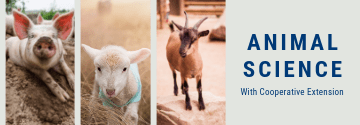Interseeding alfalfa into corn to boost alfalfa yields and reduce soil and nutrient loss shows promise in studies at the U.S. Dairy Forage Research Center near Prairie du Sac, Wisconsin. The economics are positive as well.
“The interseeding of alfalfa into corn serves as a good cover crop and it helps to mop up that extra nitrate that’s left after the corn has been harvested,” says John Grabber, a USDA agronomist.
Grabber and his colleagues have been working with interseeding alfalfa into corn for a number of years. The results suggest that alfalfa yields often double in the first year of full production versus first-year alfalfa when it is spring seeded. Typically, alfalfa in its establishment year will yield just 2.5 tons/acre of dry matter. Alfalfa interseeded into corn can typically yield 5 tons/acre in its first full production year.
Runoff rates of soil and nutrients in the corn interseeded with alfalfa are also substantially reduced, with soil losses reduced by more than 80%, nitrogen losses reduced by more than 70% and phosphorus losses reduced 60 to 80%.
But interseeding alfalfa into corn is also prone to failure if a number of steps aren’t taken, he adds.
First, alfalfa, alfalfa must be interseeded immediately after corn planting and no later than the V1 or V2 stage of corn development. Planting the alfalfa later will greatly increase the risk of alfalfa stand failure due to canopy shading from corn. Corn silage harvest must also be done about one to two weeks earlier than normal, which means using an early- to mid-season hybrid, says Grabber.
econd, crop protection products should be used to ensure the alfalfa plant establishes strong roots and isn’t plagued by fungus or insects. Grabber has been using Prohexadione, which limits alfalfa top growth and encourages root development. (It is currently not labeled for use on alfalfa, but there is hope it could be for the 2020 growing season.)
Fungicide and insecticide use also seem particularly important to use under Wisconsin growing conditions. “These plant protection products can really help alfalfa survival and yield the following year,” he says.
Third, some alfalfa varieties seem better adapted to interseeding than others. Those that develop strong root systems early are best, says Grabber.
Fertility is also important because alfalfa will take up some nitrogen during establishment, potentially shortchanging the corn crop. He recommends applying nitrogen at the higher end of recommended rates for corn silage (about 200 lb/a) to ensure that doesn’t happen.
The economics of interseeding alfalfa are positive. That’s assuming a doubling of first-year alfalfa yields, a slight yield drag on corn production and extra agrichemical costs to aid establishment of interseeding alfalfa, he notes. His estimates show that if you get an 80% success rate for establishing interseeded alfalfa with a 5% yield drag on corn, the net return (averaged across all years of the corn-alfalfa rotation) works out to about $144/a. That compares to a net return of $130/a for a conventional rotation using spring-seeded alfalfa. “So there is the potential to make a little more money with interseeded alfalfa, which is in addition to increased overall forage yield and reduced risk of soil and nutrient loss from cropland,” he says.
But interseeding isn’t all rosy, he acknowledges. If you have an extremely dry spring, the alfalfa will germinate unevenly or compete excessively with corn for soil moisture. Under such conditions, producers should forgo interseeding and instead do a conventional seeding of alfalfa the next spring, he says.
And if you have a wet soils in fall, corn silage harvest can tear up alfalfa stands. “Therefore, interseeding is best suited for cropland with good drainage and will be most successful if producers use corn harvest practices that limit soil compaction and rutting,” Grabber says.
You can view Grabber’s presentation on interseeding alfalfa into corn, presented at World Dairy Expo last fall, here.


